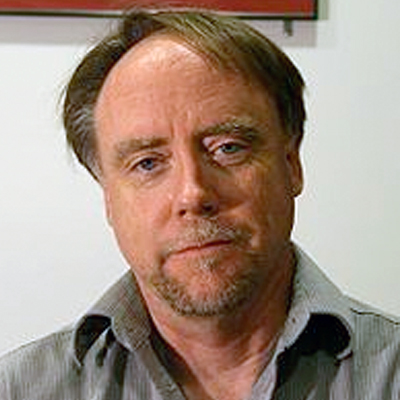Understanding the role of neutrinos in cosmology and fundamental physics
Researchers believe that elements like iodine which are the basis of some of the chemical makeup found in our body and other heavy elements like gold and uranium are created in very dense environments, such as core collapse supernovae and neutron star collisions. However, there is still much that is mysterious about the origins of these elements. Researchers have now discovered that these key building blocks of life are made of the “star stuff,” cooked in the furnaces of massive collapsing and exploding stars under the influence of the physics of elementary particles like neutrinos. “Neutrinos” are subatomic particles that comprise a part of the universe, and the physics of neutrinos plays an important role in helping researchers understand fundamental physics of the quantum world. Dr. George Fuller at the University of California, San Diego studies the general field of nuclear and particle astrophysics, specifically the central issues in neutrino astrophysics, the early universe and cosmology, and core collapse supernovae. Tackling fundamental issues in quantum mechanics and gravitation, Dr. Fuller and his graduate students do both "analytic" theory and large-scale supercomputer simulations.
Another vision of Dr. Fuller’s research is in training frontline theoretical physicists. Over the past few years, Dr. Fuller has established a track record of cultivating many excellent students who have become prominent researchers in their fields. Most of his former graduate students are still working in astrophysics and physics; one student is Professor of Physics at University of California, Irvine, another student has become a professor at the University of Montpellier in France, another a professor at North Carolina State University as one of the leaders in the field, and yet another student a professor of Physics at the University of Minnesota. By contributing to the understanding of fundamental physics and training the next generation of leading scientists, Dr. Fuller hopes to shed light on the role of neutrinos in the origin of elements as well as future applications in quantum mechanics.
Dr. Fuller’s current research areas include:
- Early Universe and Supernovae: A key objective of Dr. Fuller’s work is to understand how the universe came to be the way it is, or where the elements come from. When a massive star, ten times larger than the mass of the sun, collapses to something that is only about six miles in circumference in one second, and is at the density of an atomic nucleus. This collapse event releases an immense amount of energy. 99% of the energy that it releases in falling is then converted to neutrinos. Ultimately, these neutrinos cause the outer layers of the stars to be ejected. It is this explosion that takes the energy into space that creates the elements that are in our body or found elsewhere on Earth. This collapse environment in essence provides a unique “laboratory” for studying weakly interacting particles like neutrinos and the way those particles interact quantum mechanically in dense matter. Quantum mechanics is now the foundation of all areas of technology including transistors, computers, and other electronics. By probing the theory of quantum mechanics in a unique environment - in the early universe - Dr. Fuller hopes to gain insight into quantum physics that is otherwise unavailable.
- Neutrino Flavor Transformation in Ultra-Dense Environments: Leading cutting-edge research in this field, over the last decade Dr. Fuller and his lab have uncovered some of the properties of these mysterious and ghostlike neutrino particles, which are notorious for having feeble interactions with the rest of the world. These particles come in three "flavors" (electron, muon, and tau flavor) which determine how they interact with ordinary matter in, for example, the early universe or in the collapsing core of a massive star. Therefore, it is extremely important to understand how the flavors change and interact, and Dr. Fuller’s team was the first to discover that large-scale transformation of neutrino flavors could occur collectively. Dr. Fuller is currently extending these calculations to very high density environments. His previous experiments also suggest that there may be other kinds of neutrinos, or so-called "sterile" neutrinos that have interactions with matter that are even much weaker than normal, "active" neutrinos. Sterile neutrinos can have many interesting effects in the early universe and supernovae, and Dr. Fuller is exploring the possibility that relatively massive sterile neutrinos may be what researchers now refer to as the dark matter.

Bio
When he was four years old, Dr. George Fuller decided he was going to be a paleontologist, which morphed into archeology by the time he was seven. Everything changed when he was 12 and he became fascinated by astronomy after hearing about "antimatter" on Star Trek. Initially deeming it ridiculous, he did a little research and learned that it was real! He realized that physics and astronomy were meant for him and he has never looked back since. As an undergraduate at Caltech he took a Quantum Mechanics course taught by Richard Feynman and a General Relativity course taught by Kip Thorne. These were transformative experiences, and those subjects are at the core of his work in theoretical physics and astrophysics now.
Dr. Fuller stayed at Caltech as a graduate student in Physics under the supervision of William A. Fowler. "Willy" was a towering figure in physics, and along with Hans Bethe and others a principal founder of the field of nuclear and particle astrophysics. Dr. Fuller’s part in this enterprise was studying the interplay of neutrinos and the weak interaction on the one hand, with gravitation and nuclear physics on the other, all in astrophysical settings like core collapse supernovae and the very early universe.
What particularly excites him now is that his team is uncovering a little about the properties of the mysterious particles called neutrinos, and this new information challenges many cherished beliefs in our pictures for the origin of the elements, the early universe, and perhaps even the nature of dark matter. As Dr. Fuller proclaims, “These are heady times, and the field is wide open.” Dr. Fuller and his graduate students are pushing the frontier in this field and expanding the boundaries on fundamental issues in computation and quantum mechanics along the way.
For more information, visit http://cass.www.ucsd.edu

In the News
ScienceDaily, 8/21/12
UC San Diego News Center, 9/4/12
Discovery News, August 27, 2012
Physics Today (News Picks), August 29, 2012
The San Diego Union-Tribune, September 24, 2012
Publications
Awards
Hans A. Bethe Prize, 2013
Given annually by the American Physical Society to "recognize outstanding work in theory, experiment or observation in the areas of astrophysics, nuclear physics, nuclear astrophysics, or closely related fields."


